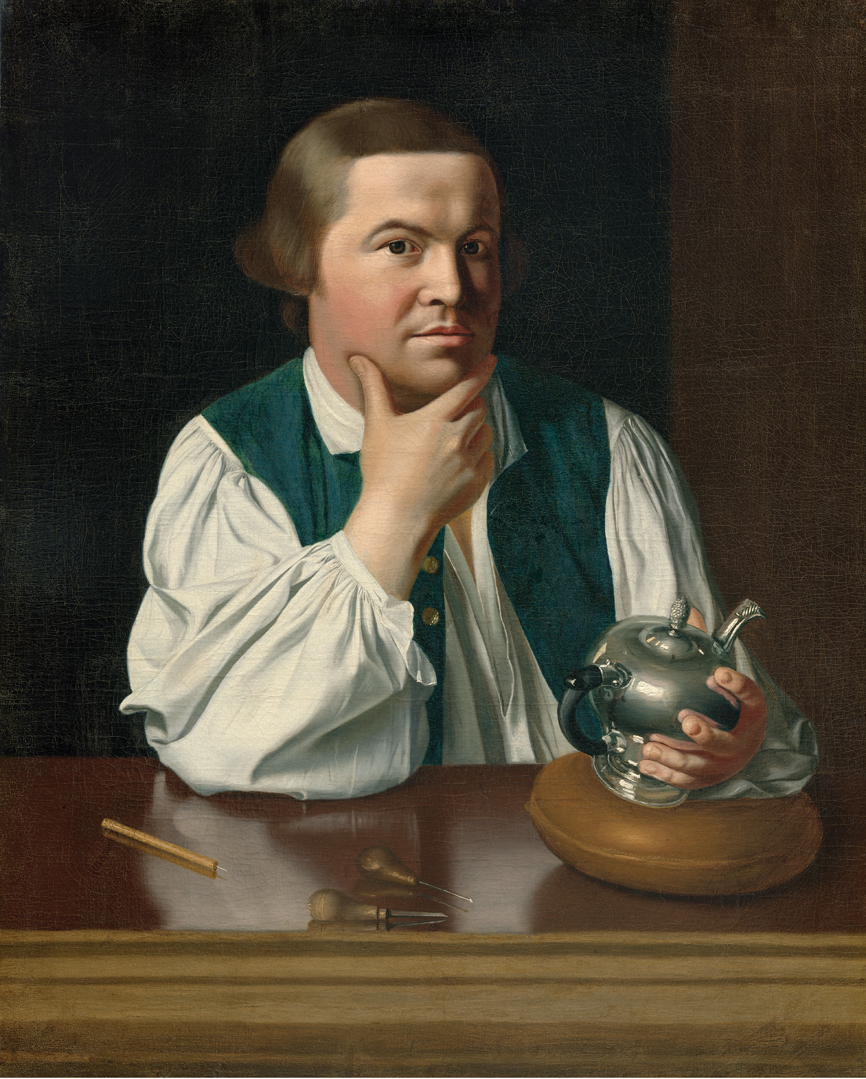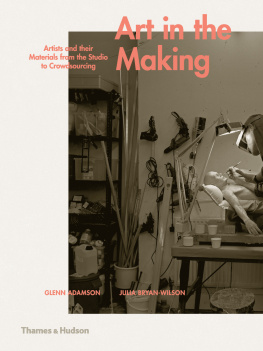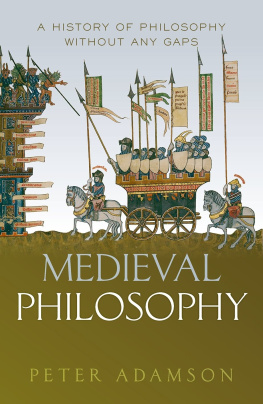Contents
Guide
Pagebreaks of the print version

For my brother, Peter
BY THE SAME AUTHOR
Fewer, Better Things
The Invention of Craft
The Craft Reader
Thinking Through Craft

CONTENTS
Craft has been many things in America: a way of making a living, of expressing creativity, of pushing technology forward. It has a potent symbolic status, one so fundamental that it anchors our everyday speech. We talk about forging links, laying foundations, hammering things out, spinning tales. Conceptually, we knit things together and carve them apart. Craftspeople themselves are often seen as representing the best of America. Capable, trustworthy, and self-sufficient, they are the quiet heroes of our national story.
Yet if craft has a prominent place in our language and our imaginations, it has less and less of a role in our everyday lives. Relatively few of us actually perform crafts anymore, or even know the technical basics of how they work. Gradually and inexorably, the United States has become disconnected from the history of its own making. And it is no coincidence that as craft has been increasingly marginalized in the economy, overall levels of social cohesion have also deteriorated. The key role once played by blacksmiths and basket makers has not been replaced. Craft is too central to our culture to be fully dislodged, too essential not to find a place in production. But today, it is most conspicuous as an absence. One of the intentions of this book is to describe what has been lost, and perhaps suggest some ways to get it back.
Crucial to this story is crafts part in a long, agonizing struggle with questions of
When I was a graduate student in the 1990s, there was hardly any such thing as craft history. Scholars who wrote about the subject were few in number and concentrated on various narrow aspects of it. Decorative art specialists might study eighteenth-century cabinetmakers or silversmiths. Labor historians focused on the rise and fall of unions and their influence on American life. Anthropologists conducted fieldwork among folk artists, learning about vernacular traditions. A handful of historians and museum curators devoted themselves to the two great reform projects in American craft, which occurred at the turn of the twentieth century and then again after 1945, the Arts and Crafts movement and the studio craft movement. This compartmentalized approach produced a lot of great scholarship, which I have relied on in writing this book. But it also obscured the common experiences and challenges faced by American artisans of all kinds.
Today, a more mature field of craft studies is emerging. There is more to read on the topic every year, and much of it takes a broad view. There has not, however, been a single overview of craft in America. This book aims to be that history. I have written it with two complementary goals in mind: first, to braid together many different accounts of craft into a single narrative; and second, to tell the story of America through the eyes of its artisans. Of course, I havent covered everythingnot even close. For craft is a vast and varied landscape, difficult to map, especially near the edges. The very
Clearly, there is room for different viewpoints here. But if you ask me, the perspective that should count is that of makers themselves. So, in this book, I have tried to take the words and works of artisans as my guideposts, firmly rooted as they are. After all, craft is an embodied, experiential matter. It cannot be performed well without care or pride in the result. Learning a trade requires time sufficient to occupy much of a persons life. Given that level of commitment, it is no wonder that craft is the repository of deep, sometimes contradictory feelings. It has served as a stable foundation for American culture, a way of holding the past in memory; but again and again, it has been taken up by activists who hope to change the world. If craft represents the best that America has to offer, it is also a way to combat injustice, to reach for better things still. Workshops and factories, dockyards and building sites, parlors and garagesthese spaces have always been contested territory. In the story of American craft, then, we see the nations founding principles meet its foundational problems. We see the idea of America itself taking shape, blow by blow and stitch by stitch.
He could be holding a book , a skull, or a prize melon. Instead, he has a silver teapot. We are face-to-face with an artisan and his creation, witness not to an act of making, but rather to his reflection on that act, both literally and figuratively. One skillful hand is doubled in the smoothly polished metal he holds, while the other props up his clean-shaven chin in a gesture of unhurried consideration.
Walk into the American galleries at the Museum of Fine Arts, Boston, and you will see the painting straightaway, in pride of place, dead center on the first wall: John Singleton Copleys portrait of Paul Revere. The curators have surrounded the picture with surviving specimens of the smiths handiwork, including his famous Sons of Liberty Bowl, which pays tribute to the Glorious Ninety-Two members of the Massachusetts House of Representatives, who confronted the British Crown over punitive taxes. Copley, similarly, supplied Revere with the tools of his trade: two burins and a needle for engraving, and a sand-filled leather pad on which to steady the teapot as he worked. These proofs of his profession are practical, unpretentious, so different from the allegorical props that might appear in a painting of an aristocrat, or a saint. Even the two gold buttons visible on Reveres woolen waistcoat are likely of his own manufacture. He does, however, sit at a polished table, perhaps of mahogany. A strange choice for a work surface, it reads instead as artistic license, affording an opportunity for the paintings most breathtaking passage, the soft reflected glow of Reveres freshly laundered shirtsleeves.

John Singleton Copley, Paul Revere , American, 17381815. 1768. Oil on canvas, 89.22 72.39 cm (351/8 281/2 in.). Museum of Fine Arts, Boston. Gift of Joseph W. Revere, William B. Revere, and Edward H. R. Revere, 30.781.
We dont actually know why Copley painted the portrait, or whether it was commissioned by Revere himself, though that seems likely. But for generations, it has been understood as embodying Americas virtues on the verge of the countrys independence: clarity, pragmatism, and self-sufficiency. Not incidentally, the picture is also beautifully crafted. Copleys workmanship, as supremely competent as Reveres own, adds to the feeling of solidity and directness, so often seen as defining the national character.
But straightforwardness can be a surprisingly complicated thing, and Copleys portrait of Revere serves as an ideal entry point to the history of American craft precisely because it is not simple. The design Revere is about to inscribe into the teapot is likely a coat of arms, an emblem of aristocracy. In 1768, when Copley painted his portrait, both painter and smith were not only British subjects, but also dependent on












